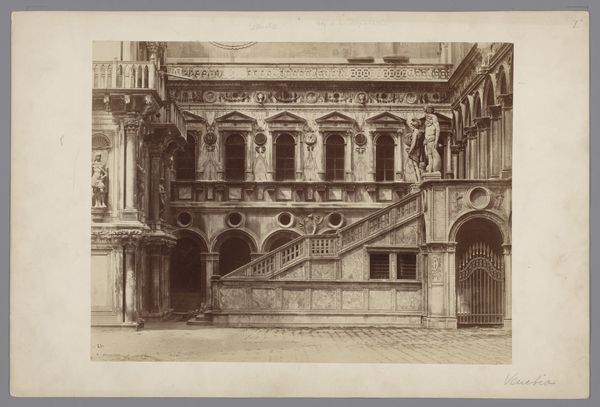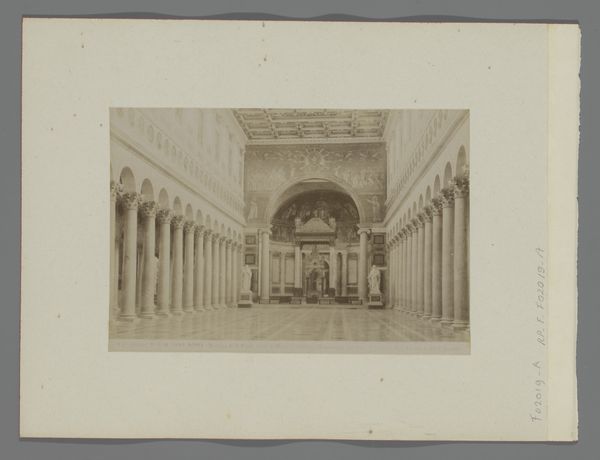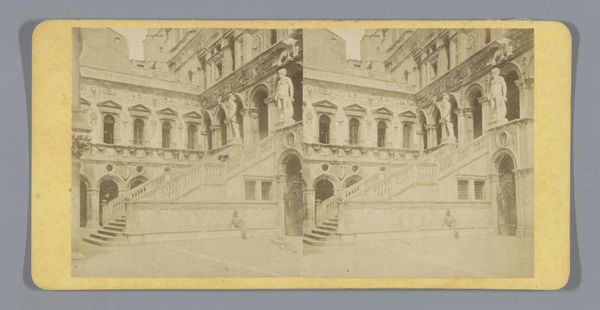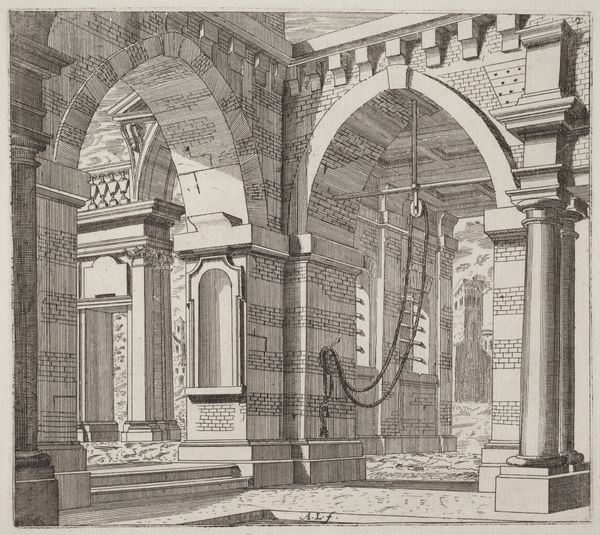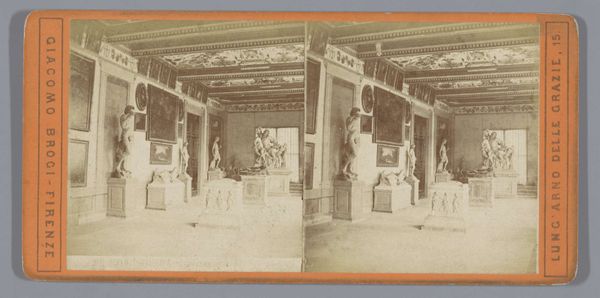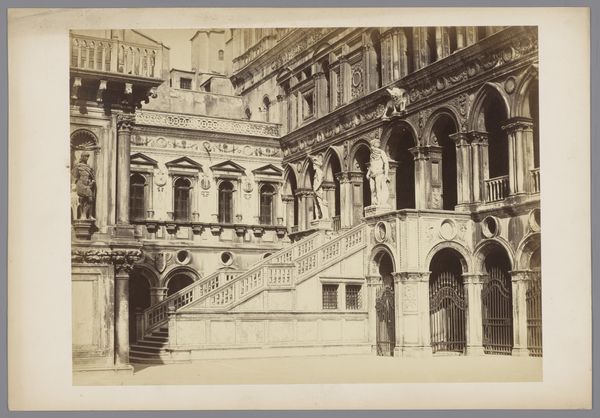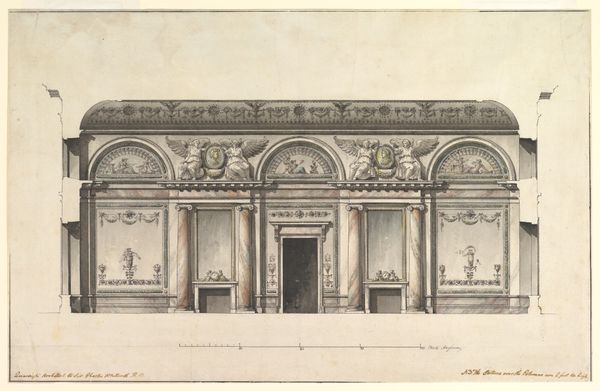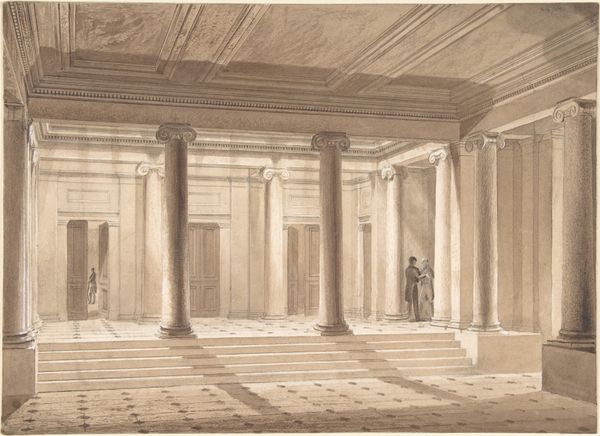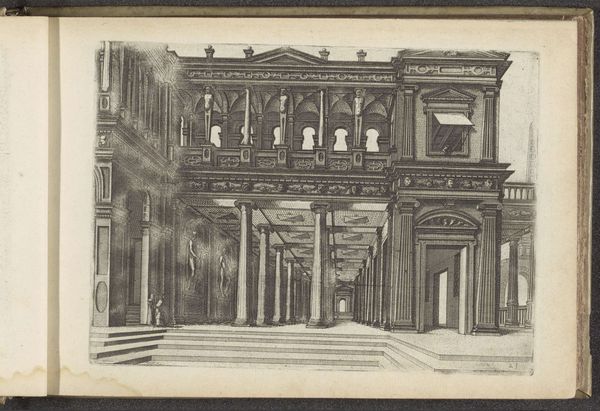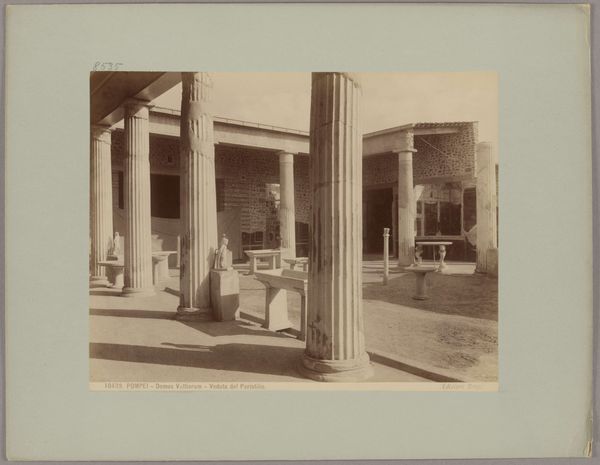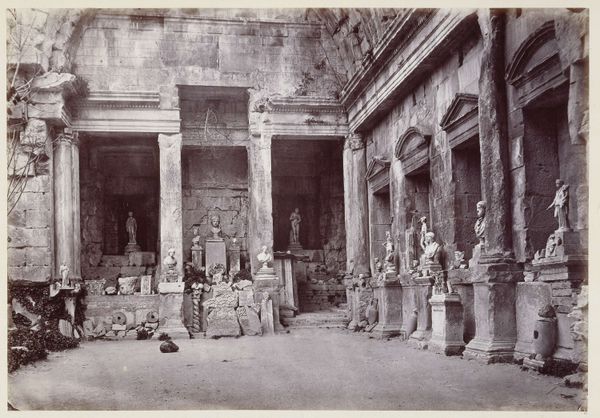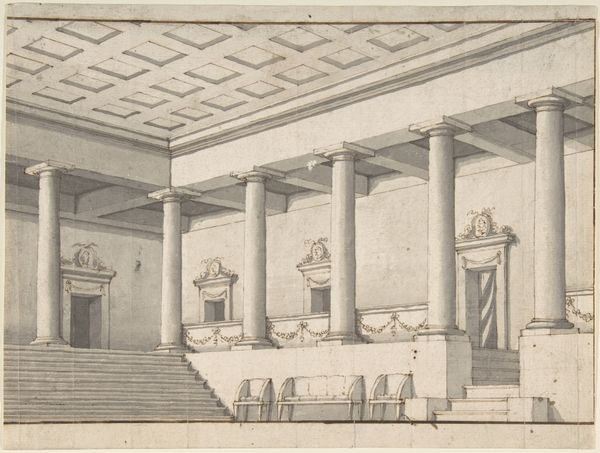
print, photography, architecture
# print
#
greek-and-roman-art
#
landscape
#
photography
#
architecture
Dimensions: height 92 mm, width 150 mm
Copyright: Rijks Museum: Open Domain
Editor: So, here we have a print from J. Daziaro, dating back to the late 19th century. It’s a photograph of the entrance to the Hermitage in Saint Petersburg, featuring these imposing atlas figures. What immediately strikes me is the way the photograph captures the weight and grandeur of the architecture. What catches your eye in this image? Curator: What I see is a confluence of labor and capital visualized. The Atlantes, those muscular figures seemingly bearing the weight of the Hermitage, are a clear nod to the exploited labor underpinning the Tsarist regime's cultural projects. How were those figures carved? Who were the artisans involved? This image hints at a whole system of production and its social hierarchy. Editor: That’s fascinating. I hadn’t thought about it in terms of the labor involved. The figures always just seemed like pure artistic expression. Do you think the photographer was consciously making a statement about labor? Curator: Consciously or not, the photograph itself is a product of industrial processes. The photographic print, a mass-reproducible image, makes this grand architecture accessible in a way that challenges traditional notions of art ownership. It's about access, reproduction, and the material conditions that make this representation possible. Editor: So, even the medium itself, photography, plays a role in challenging established hierarchies? Curator: Precisely. It democratizes the image. We are no longer reliant on painting or sculpture. Photography opens up possibilities to disseminate cultural symbols like this worldwide. It turns the Hermitage into a commodity of sorts. Editor: This has totally shifted my understanding. I went in thinking about the artistic achievement and now I’m considering it in relation to labor, material conditions, and even the economics of image reproduction. Curator: Good. Looking at art through this lens reveals its connection to production and its place within systems of power and consumption. It reframes our understanding of the object's value.
Comments
No comments
Be the first to comment and join the conversation on the ultimate creative platform.
